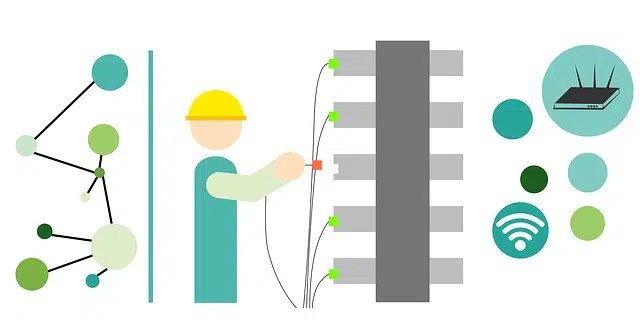
A network protocol establishes the guidelines for the interconnection of system components.
Protocol is the term used to refer to the set of norms, rules and guidelines that serve to guide a behavior or action. Network , for its part, is a kind of structure or system that has a certain pattern.
The concept of network protocol is used in the context of computing to name the regulations and criteria that establish how the various components of a certain interconnection system should communicate. This means that, through this protocol, devices that are connected to the network can exchange data .
How a network protocol works
Also known as a communication protocol , the network protocol establishes the semantics and syntax of information exchange, something that constitutes a standard. Network computers, in this way, have to act according to the parameters and criteria established by the protocol in question to communicate with each other and to recover data that, for some reason, has not reached its destination.
Various information that is essential for the connection is included in the network protocol. The protocol indicates how the physical connection is made, establishes the way in which the communication should begin and end, determines how to act in the event of corrupted data, protects the information against attack by intruders, signals the eventual closure of the transmission, etc.
There are network protocols at each layer or level of the connection. The lower layer refers to the physical connectivity that allows the development of the network (with UTP cables , radio waves , etc.), while the most advanced layer is linked to the applications used by the computer user (with protocols such as HTTP , FTP , SMTP , POP and others).

HTTP is a network protocol that defines the syntax and semantics used by servers, proxies, and clients to communicate.
HTTP
The Hypertext Transfer Protocol is used in all transactions that take place on the Internet, as it defines the semantics and syntax that servers, proxies and clients (all components of the web architecture) must use to establish communication between them.
It is a transaction-oriented protocol that relies on the "request-response" scheme, typical between a client (also called a user agent and can be, for example, an Internet browser) and a server. The information transmitted in this process is called a resource , identified through a URL ( Uniform Resource Locator ).
FTP, another network protocol
The File Transfer Protocol , for its part, is used when you want to send and receive files from one system to another, as long as both are based on the client-server architecture and are connected to a network that complies with TCP. , explained in the definition of communication protocol .
FTP allows a user to connect to a server to download or upload files, without the need for both computers to use the same operating system.
SMTP
With a lesser-known name than the previous two, the Simple Mail Transfer Protocol is used an untold number of times a day by users around the world, as it shapes the exchange of electronic mail messages (also known as e-mail) . mail or email ) between a wide range of devices, such as mobile phones, tablets and computers.
This is an official standard whose operation is in the hands of email service providers.
POP, network protocol linked to email
The Post Office or Post Office Protocol gives users the ability to receive and store email on a local computer . Currently, the use of POP3, the most recent version, is preferred, since the first two are considered obsolete.
